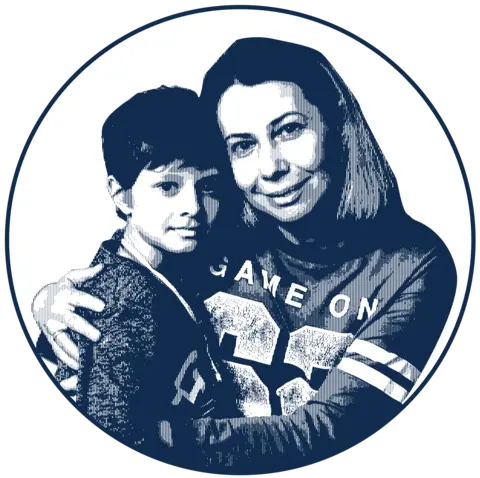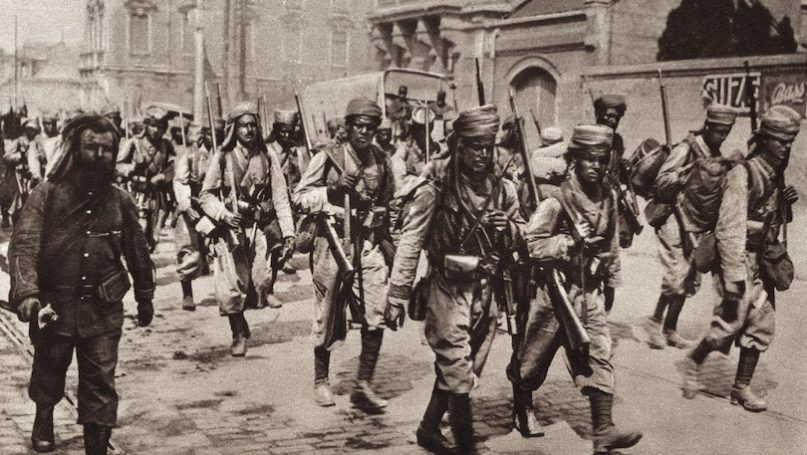How successful businesses change their own ecosystems
by Sally R. Osberg and Roger L. Martin

Angus Grieg
Summary. Social entrepreneurship has emerged over the past several decades as a way to identify and bring about potentially transformative societal improvements. Ventures in this realm are usually intended to benefit economically marginalized segments of society
Social entrepreneurship has emerged over the past several decades as a way to identify and bring about potentially transformative societal change. A hybrid of government intervention and pure business entrepreneurship, social ventures can address problems that are too narrow in scope to spark legislative activism or to attract private capital.
To succeed, these ventures must adhere to both social goals and stiff financial constraints. Typically, the aim is to benefit a specific group of people, permanently transforming their lives by altering a prevailing socioeconomic equilibrium that works to their disadvantage. Sometimes, as with environmental entrepreneurship, the benefit may be extended to a broader group once the project has provided proof of concept. But more often the benefit’s target is an economically disadvantaged or marginalized segment of society that doesn’t have the means to transform its social or economic prospects without help.
GoodWeave

When customers buy carpets bearing the GoodWeave label, they know that their purchases were woven without child labor.

In Afghanistan, GoodWeave’s supply chain inspectors are all female, so they may enter the women’s quarters in homes, where most carpets are made.
The endeavor must also be financially sustainable. Otherwise the new socioeconomic equilibrium will require a constant flow of subsidies from taxpayers or charitable givers, which are difficult to guarantee indefinitely. To achieve sustainability, an enterprise’s costs should fall as the number of its beneficiaries rises, allowing the venture to reduce its dependence on philanthropic or governmental support as it grows.
In some cases a social enterprise may even spawn a profitable business. In the late 1970s, for example, Muhammad Yunus secured funding to conduct an experiment in which very poor borrowers were given tiny loans. The experiment grew into the famed Grameen Bank, a financially sustainable social business serving disadvantaged Bangladeshis. As others around the world saw that it was actually possible to make a tidy profit lending to poor people, they adopted the Grameen model, vastly magnifying the impact of Yunus’s initial innovation.
What can social entrepreneurs do to increase their chances of achieving sustainability—and perhaps even profitability? We think we have an answer. Over the past 15 years we have studied successful social entrepreneurs up close through our work for the Skoll Foundation, which was established in 1999 by the internet entrepreneur Jeffrey Skoll. Each year the foundation confers the Skoll Award for Social Entrepreneurship (SASE) on a small number of people. More than 100 social entrepreneurs representing 91 organizations have received Skoll awards to date.
In studying these leaders and their ventures, we have found that they all focus on changing two features of an existing system—the economic actors involved and the enabling technology applied—to create sustainable financial models that can permanently shift the social and economic equilibrium for their targeted beneficiaries. In the following pages we’ll describe how representative entrepreneurs have successfully made these changes.
The Actors
Social and economic problems often reflect an imbalance of power among the economic actors involved. India’s handwoven-carpet industry offers a prime example of this dynamic. In the early 1980s the children’s rights activist Kailash Satyarthi, joint winner with Malala Yousafzai of the 2014 Nobel Peace Prize, saw that poor children were easy prey for labor brokers who recruited workers for a number of Indian industries, including carpet weaving.
Social entrepreneurs add new actors to an existing system: customers and government.
Captured by these middlemen, the children were sold to business owners who forced them to work 12 or more hours a day under brutal conditions, their small hands producing the handsome but inexpensive rugs retailers demanded. Three groups of players—owners, labor brokers, and retailers—dominated the country’s handmade-rug industry, their interlocking interests perpetuating a particularly ugly equilibrium that benefited them by exploiting children.
In situations like this, we have observed, social entrepreneurs aim to transform the equilibrium by adding new actors to an existing system. These actors fall into two categories: customers, whose role is to shift the power balance; and government, whose role is to alter the economics.
Customers and power.
Satyarthi began his career in activism primarily through advocacy and organizing raids on companies, in the hope that he could raise awareness of child exploitation. He recalls the point at which he forced himself to admit that this approach would never change the system. Following a harrowing but successful raid, he was headed home when he confronted yet another bunch of labor brokers boarding a train with dozens of children bound for a life of servitude. He realized that freeing 10 or 20 or 200 children, when another 200 or 2,000 would come right behind them, was not the solution.
What could make a difference, he discovered, was enlightened consumers who would refuse to buy rugs that had been made with slave labor. Satyarthi’s insight came when an elderly woman told him she had bought a carpet in utter ignorance of how it had been made, but once she learned that it had probably been woven by child laborers, she felt she had no recourse but to throw it out. “I’m very old,” she told the activist, “but you’re very young—you must do something so that I can buy a new carpet.”
FURTHER READING

Making Social Ventures Work
Magazine Article James D. Thompson and Ian MacMillan
Five guidelines can help you build profitable, socially beneficial new businesses in the face of daunting uncertainty.
Satyarthi realized that this woman represented others who could be educated to shun products produced by exploitation in favor of those produced responsibly. In the mid-1990s he launched Rugmark (now GoodWeave International) as the first voluntary labeling scheme to certify rugs produced without child labor in South Asia.
Today GoodWeave operates globally, focusing on the top retail markets and key rug-producing regions across Asia. More than 130 carpet importers and retailers—including Target—have signed on, pledging to source woven rugs that have been certified by GoodWeave. Satyarthi understood, as have the many other social entrepreneurs introducing certification systems in a wide variety of industries, that consumers represent a potent and sustainable means of altering a suboptimal social equilibrium. As long as certification labels are undergirded by well-conceived and credible efforts, they inform and motivate consumers through increased transparency. When enough consumers vote with their wallets, retailers and suppliers get the message—and entire systems are forever altered.
Government and economics.
A number of successful social entrepreneurs have generated a better equilibrium by moving government from the sidelines to a far more productive place in the system. This new role leverages the effectiveness of citizens’ taxes or, in the case of emerging economies, development aid from wealthy nations, making government services more valuable. The Amazon Conservation Team (ACT), for example, has tackled the problem of Amazon basin deforestation by rendering Brazil’s government a more effective actor in a system that previously pitted primarily indigenous peoples against the loggers, ranchers, and miners who were claiming more and more of the basin for development, razing millions of hectares of forest—often illegally—in the process. Although Amazonian peoples have for generations considered vast tracts of the basin as their own, their existence was increasingly tenuous, and they had few means of asserting control over those lands.
But as Brazil woke up to the massive problem of deforestation, the government could do little given the sheer magnitude of the violations. Again and again it found that by the time illegal use of indigenous peoples’ land in the rain forest was identified, the damage had already been done.
ACT’s core innovation was to equip tribal peoples with handheld GPS devices and train them to chart their ancestral lands. The resulting maps enabled them to advocate more effectively for their own interests by supplying the government with information needed for rain forest conservation. With their territories clearly identified, tribal peoples could monitor and protect the land on which their way of life depended. This distributed system of monitoring and conserving significantly outperformed any centralized approach. The balance of power in the struggle with commercial interests was cost-effectively shifted in favor of the indigenous peoples, contributing to more-efficient and more-effective conservation.
The Technology
Economic and social agents use structures, business models, and tools to achieve their desired ends in an existing equilibrium. The actors and their means of operating—the engagement “technologies” they use—combine to make the equilibrium unjust and suboptimal. A second way, therefore, to effect change is to dramatically improve a system’s technology while leaving the current actors in place. Such improvement is achieved in one of three ways: substitution, creation, or repurposing.
APOPO

Bart Weetjens, who’d kept rats as childhood pets, realized they could be put to work detecting land mines. The rodents are trainable and weigh so little that they wouldn’t detonate the mines. His organization, APOPO, has since used rats to help clear more than 8 million square meters of land of some 1,000 unexploded bombs. The rats have also identified more than 7,000 tuberculosis patients, many of whom were initially deemed free of the illness by their local clinics.
Replace a key technology with a lower-cost one.
A number of SASE winners have succeeded by identifying a lower-cost technology that can substitute for a prevailing standard in a given function or product component.
Bart Weetjens, the founder of APOPO, realized that the greatest hurdle to clearing land mines was the high cost of the prevailing technologies, which included expensive equipment and trained dogs. For countries riddled with mines, de-mining machinery was hard to come by; furthermore, the weight of the dogs made them vulnerable to death from an exploding mine. Consequently, efforts to clear minefields were slow to gain momentum. Having kept rats as childhood pets, Weetjens knew they were smart and trainable enough to sniff out land mines. He showed that African giant pouched rats were perfect for the job, weighing so little that they wouldn’t detonate the mines. Countries and organizations can use APOPO’s services to remove mines at a radically lower cost and thus de-mine more land faster than was previously possible. (Weetjens has also trained his rats to sniff out tuberculosis in sputum samples. This cheap and readily available “technology” enables remote, isolated clinics to identify TB and get patients into treatment sooner.)
In settings where medical professionals are in short supply or strapped for time, many social entrepreneurs have discovered that paraprofessionals can deliver outstanding results. In sub-Saharan Africa the shortage of doctors and nurses is particularly acute, so the nonprofit Medic Mobile equips community health workers’ phones with applications that help the workers do everything from track drug inventories to register new pregnancies—tasks that would otherwise fall to professionals, distracting them from their more specialized, and critical, responsibilities.
In another example, mothers2mothers trains “mentor mothers” to monitor HIV-positive pregnant women. Such help has been shown to increase the latter’s adherence to the demanding treatment regimens required to increase their chances of delivering healthy, HIV-negative babies. As an added benefit, m2m’s mentor mothers leverage the international community’s enormous investment in antiretroviral drugs and other medicines to combat AIDS.
A New Model for Public Projects
Although social entrepreneurship started squarely in the private nonprofit world, striking ...
In the United States, Health Leads trains college students to “prescribe” what doctors would if they had the time and the information: nonmedical social support services to the many poor or struggling patients who use public health clinics or hospital emergency rooms. The organization recognizes that such patients stand a better chance of recovering from illness if their needs for food, shelter, and transportation are met. Better health outcomes reduce the workload on doctors and nurses and the cost burden on the public health care system.
Create a new enabling technology.
We have observed that social entrepreneurs also succeed by supplying or creating a new technology that allows users to do things they could not previously do. For example, before Matt Flannery and Jessica Jackley created the Kiva platform, it was nearly impossible for small-scale lenders in wealthy countries to lend to small-scale borrowers in poor countries. The would-be lenders had no way to funnel funds through microfinance institutions (MFIs), which are largely regulated as banks by the countries in which they are based. Instead they had to stick with charitable giving by making donations to NGOs that offered microfinance programs in poor countries.
Medic Mobile equips community health workers’ phones with invaluable apps.
The Kiva platform provides a technology to break through these barriers. It enables microlenders worldwide to make loans as small as $25 to microborrowers in poor countries. Kiva manages the transaction and legal costs and requirements with its global network of MFIs and validates borrowers through locally based partners. Transaction costs on both sides have plummeted as more lenders and borrowers have begun to use the platform. Kiva is on track to facilitate more than $1 billion in microloans within the next couple of years. It has enjoyed a 98% repayment rate since its founding, in 2005, and its earned-to-contributed revenue ratio increases each year.
Repurpose an existing enabling technology.
The third mechanism is similar to the second. However, instead of creating a new technology, the social entrepreneur repurposes an existing one from a different context.
The SASE winner Victoria Hale, a former pharmaceutical company scientist and U.S. Food and Drug Administration staffer, created the Institute for OneWorld Health (iOWH) in order to scour pharmaceutical company shelves for drugs deemed unsuitable for developed world markets and incapable of generating profits in the developing world. She reasoned that some of this latent intellectual property could be repurposed to fight diseases endemic in the poorest parts of the world. An early target for iOWH, which subsequently merged with the global health organization Path, was visceral leishmaniasis (black fever), a fly-borne disease that infects half a million people and kills 30,000 each year, principally in rural India and East Africa. Black fever’s fatality rate existed not because the disease was incurable but because treatment was prohibitively expensive.
Hale identified a drug that had been fully developed but was no longer in production, paromomycin, which she believed could be used to cure black fever. Clinical trials in India proved her right. Eliminating the huge costs of drug development enabled iOWH to persuade the Indian government to make paromomycin available, turning “prohibitively expensive” into “life-saving” for those afflicted.
Imazon
JANUARY 2010

FEBRUARY 2011

Amazon's world-renowned monitoring system can track logging, small-road clearing, and fires in the Amazon rain forest, thus aiding efforts to stop deforestation and degradation. The organization uses its regularly updated data to spark frank discussion and to push for action, working with governments to stop illegal operations.
Meanwhile, in the Amazon basin once again, the SASE winner Imazon anticipated by about a decade Google Earth’s repurposing of public satellite infrastructure. The U.S. government and others built the infrastructure and incurred all the research, development, and other capital costs; Google acquired and repurposed it to provide a popular service.
Imazon repurposed the same infrastructure to track real-time changes in the Amazon basin—with a particular focus on the construction of new roads in the rain forest. Historically, given the size and remoteness of this terrain, illegal loggers could build an illegal road and use it for illegal cutting for years before being discovered and shut down. Imazon’s application of satellite technology, and its partnership with both government and the media, expose logging operations and other incursions so that perpetrators can be identified, stopped, and prosecuted.
A Blended Approach
The strategies we’ve described for succeeding in social entrepreneurship are not mutually exclusive. Many SASE winners draw upon several of them to achieve a new, sustainable equilibrium for their target constituents. For example, Debbie Aung Din Taylor and Jim Taylor, of Proximity Designs, understood that transforming Myanmar’s smallholder agricultural sector required them to fire on multiple cylinders: They had to reduce costs traditionally associated with a start-up, pare down the operating costs of product design and development, cultivate customers, shift government’s role, and continually enhance their technology solutions.
In Myanmar, where the two have worked since 2004, smallholders are the country’s backbone: More than 70% of the population depends on agriculture, and most farmers cultivate subsistence plots in rural locations. Only now emerging from decades of dictatorship, the government has neither the financial resources nor the capability to support this population. Private-sector businesses entering the region are focused on the larger and more sophisticated rice farmers whose output can be aggregated to meet market demands. And donors are more likely to be attracted to health or education programs than to the needs of smallholders. Rural farmers are left to eke out an existence on their own, effectively denied the information, tools, and training that would decrease their vulnerability and increase their productivity.
The Taylors were determined to transform this miserable equilibrium. A lean, focused, entrepreneurial organization from the outset, Proximity started life as a country office for International Development Enterprises, a well-established agricultural products NGO, which cut its start-up costs significantly. As it evolved and became an independent entity, its next task was to figure out how to significantly reduce product R&D costs. It did so in two ways: by partnering with Stanford’s Hasso Plattner Institute of Design and by actively recruiting low-cost, talented, and highly motivated design “fellows” and interns.
FURTHER READING

Reaching the Rich World’s Poorest Consumers
Magazine Article Muhammad Yunus, Frédéric Dalsace, David Menascé, and Bénédicte Faivre-Tavignot
Five leading companies have adapted nonprofit business models to serve the bottom of the pyramid in France.
Understanding its poor rural customers enables Proximity to meet their needs across the board. The organization designs its pumps and other irrigation products to be effective, durable, and affordable, and tests its seeds to ensure healthy crops. But a substantial number of Myanmar’s farmers can’t afford new seed stock or even the least expensive device, so Proximity has added microcredit to its suite of services. In addition, it supplements its products and financial services with advisory support, providing the technical assistance that might otherwise be delivered by a country’s agricultural extension services. Finally, the organization engages deftly with the government, which considers it a trusted adviser on issues of food security and a resource for training agricultural officers.
Proximity’s operating-cost reengineering has enabled it to constantly improve and add to its line of products and services. This, in turn, has increased market demand, grown the organization’s customer base, dramatically increased revenue, and—most important—substantially improved food security and livelihood for millions of people.
The government officials, social activists, and business entrepreneurs associated with the great social transformations that have improved our world may not have imagined how much their innovations would accomplish; many did not live to see it happen. Martin Luther King Jr. is a poignant example. The same may be true of today’s social entrepreneurs. But their hybrid method is helping to create change in ways that would be difficult for government or business.
To be sure, pursuing a social goal while being constrained by the requirement of financial sustainability is difficult. Yet the evidence we see from our work at the Skoll Foundation shows that many entrepreneurs are succeeding, in settings all over the world, at creating scalable social ventures to transform unhappy circumstances for a great number of people. The clearly emerging pattern in their successes can serve as a valuable road map for others, thereby speeding society’s journey toward a better, fairer future.
A version of this article appeared in the May 2015 issue (pp.86–94) of Harvard Business Review.
Read more on Business and society or related topics Corporate social responsibility and Public-private partnerships
Sally R. Osberg is the president and CEO of the Skoll Foundation.
Roger L. Martin is a former dean of the Rotman School of Management, an adviser to CEOs, and the author of A New Way to Think (Harvard Business Review Press, 2022).










